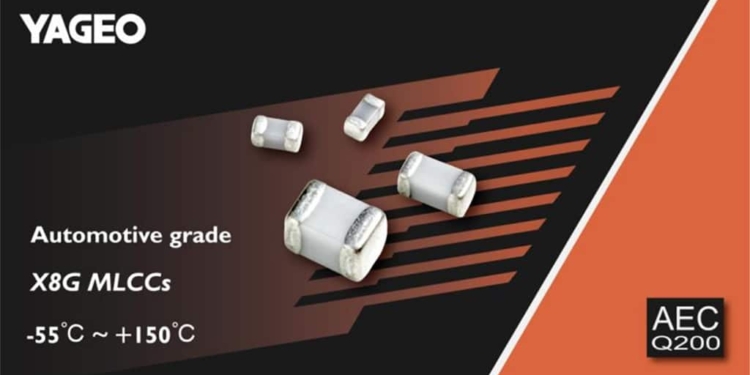Source: Yageo news
Yageo Corporation has just introduced the automotive grade NPO, named X8G, with maximum working temperature up to 150°C. The first released range covers 0805 1nF ~ 10nF with 100V rated voltage, later this range will be extended to 0603 and 0402. It means Yageo has both automotive grade X8R and X8G with 150°C working temperature.
Many car outfits, originally only available for luxury vehicles, have now become standard equipment for reasons of safety, infotainment, and comfort. The usage of MLCCs has increased rapidly because more electronic systems have been installed in a car.
On the other hand, as a spacious and cozy passenger area is essential, it has meant that these extra electronic devices have been pushed into the engine compartment where temperatures are higher. Therefore, MLCCs with higher working temperature are required.
Featuring excellent temperature characteristics and a narrow tolerance of capacitance, X8G is categorized as class I MLCC with excellent capacitance stability, ±30ppm/°C, over a temperature range of -55°C to +150°C. The material feature of the X8G makes its SRF (Self Resonant Frequency) always higher than the Class II MLCCs, so X8G, like NPO, is desired for high frequency applications .
Yageo X8G MLCC is AEC-Q200 qualified and able to reach even higher quality level, longer life, and more superior reliability. The approaches including high quality raw material, advanced and dedicated production line, tightened processing control, and entire in line and outgoing automatic check are adopted on top of the existing production standards while PPAP and RoHS documents are also available. X8G MLCC offers customers a wider variety of choices and solutions in order to meet various application demands and requirements.
































